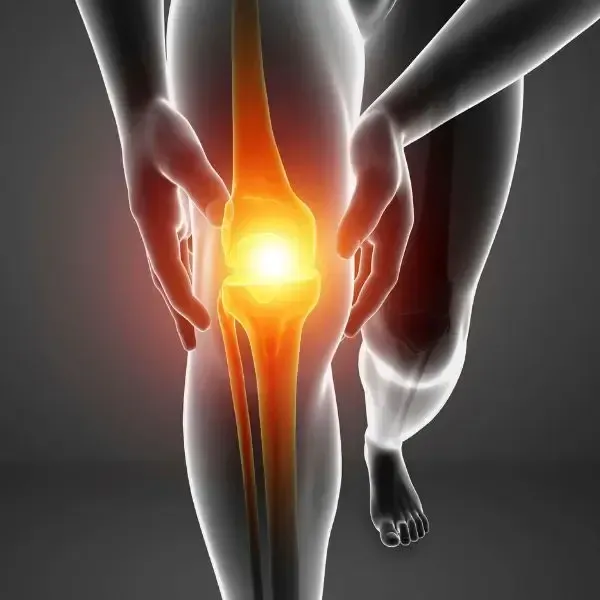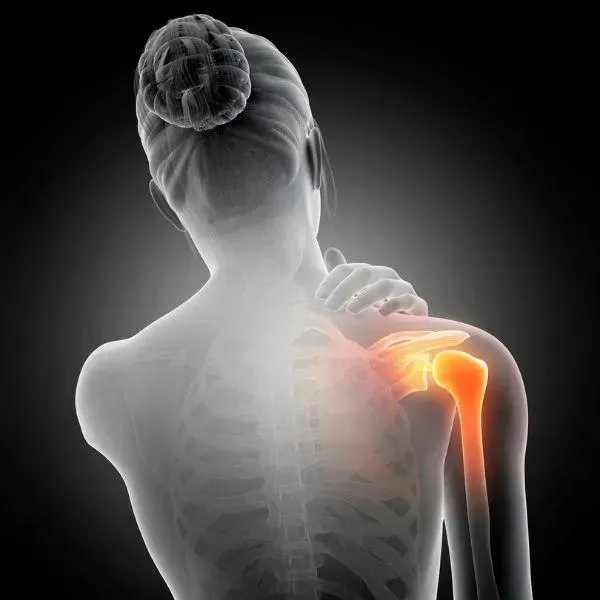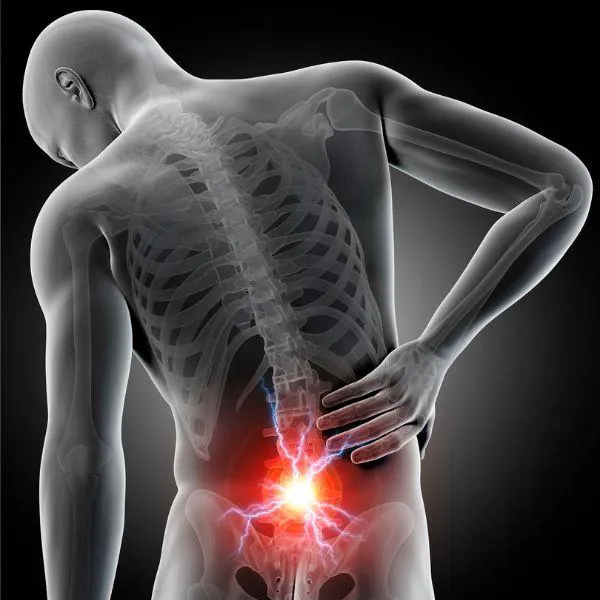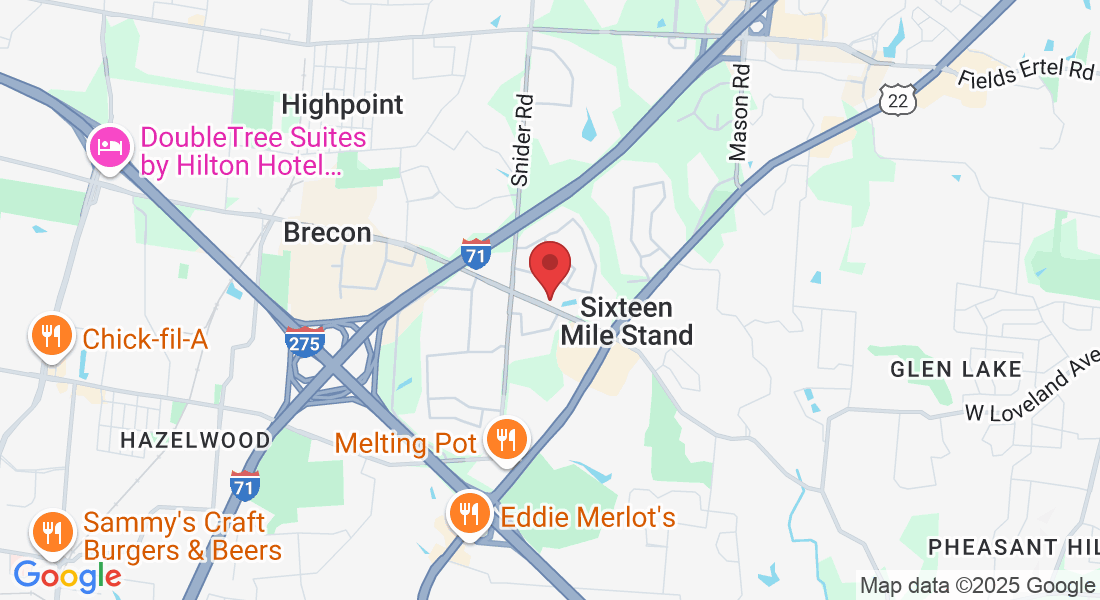Chiropractor and Neuropathy Pain Specialist in Cincinnati, OH
Do You Feel Like You've Been ROBBED Of Life Because Of Chronic Pain?
If You're Tired Of Living In Pain Schedule Our 4 Point Chronic Pain Assessment So We Can Find The Root Cause Of Your Pain, And You Can Start Enjoying Everyday Life Again!

HealthQuest of Cincinnati As Seen On


Meet Dr. Robert Prewitt, co-founder of HealthQuest, a dynamic leader in drug-free health and wellness care. Born and raised in Blanchester, Ohio, Dr. Prewitt graduated with honors from Palmer College of Chiropractic in 1994, where he also met his wife, Dr. Beverly Taylor.
Driven by his belief in the power of teamwork, Dr. Prewitt has built a passionate and dedicated team at HealthQuest, helping thousands each week "Turn Up Their Power!" naturally.
Dr. Prewitt’s commitment to holistic health extends beyond his practice—he’s a proud father who has raised his three sons using natural, conservative methods. Recognized as the "2013 Ohio Chiropractor of the Year," Dr. Prewitt leads quarterly service projects that bring his fired-up team together to make a positive impact in Ohio communities.
ARE YOU DEALING WITH CHRONIC PAIN?
If This Sounds Like You, We Can Help!

You Can't Enjoy Everyday Activities
If you're experiencing daily joint pain you may feel depressed or anxious because small daily tasks become painful and difficult. Little things like taking a walk, getting groceries, bending over, or getting out of bed can feel exhausting. We can help.

Suffering in Constant Pain
Maybe you're dealing with specific chronic pain like knee pain, back pain, or burning or numbness in the hand or feet. You may have constant pain that's debilitating and robbing you of participating in life. We can help.

Difficulty Concentrating
Do you find it hard to concentrate or complete small tasks? Are you're forgetting simple things like where you parked your car? You may even feel like you're going crazy at times because of brain fog and fatigue. We can help.

Fatigue and Low Energy
Are you constantly feeling drain, tired, and fatigue no matter how much sleep you get. Do you feel like you don't have the energy to complete the everyday tasks that use to seem easy? We can help.
HealthQuest Of Cincinnati Your Total Body Natural Healing Center
Neuropathy and Joint Pain Specialist in Cincinnati, OH
If you're experiencing numbness, tingling, burning or shooting pain in your hands or feet, we can help.
If you're experiencing knee pain, difficulty standing up, grinding or cracking, we can help.
If you're experiencing shoulder pain, stiffness, loss of mobility, or dull aching pain, we can help.
If you're experiencing shoulder pain, stiffness, loss of mobility, or dull aching pain, we can help.
If you're experiencing a Back pain, Sciatica, pain from bulging, herniated, degenerative discs, we can help.
If you're experiencing neck pain, headaches, pain from bulging, herniated, degenerative discs, or whiplash we can help.
If you're experiencing chronic muscle tension, sports injuries or muscle strains, or limited range of motion, we can help.
If you're experiencing chronic back or neck pain caused by herniated discs, Sciatica, we can help.
Why Choose Us
Your Joint Pain and Neuropathy Specialists In Cincinnati, OH
550+
Patient Reviews
2K+
Patients Served
25+
Years Experience

TESTIMONIALS
What Patients Are Saying
"60% more feeling and less pain!"
"I walked 18 holes of golf with no pain in my feet and I am hitting the ball 20-30 yards further. I am really pleased with the therapy I've received here."- Roger

"I can pick up my grandkids now"
"It was very hard for me to work and lift objects, I had to take pills everyday.My life has changed and I no longer take pills" - Kathy Gaither

"I couldn't ask for a better result"
"I was to tired and to sore to do the things I wanted to do. I am able to get up and get stuff done without thinking about how much pain I will be in later." - Tyler

"My Quality of life is better, and my wife is happier too"
"The program has vastly improved my restless leg. I feel better and have less pain."- Tim


Are You Dealing With Relentless Nerve Pain?
If you're suffering from numbness, tingling or burning in your hands or feet you could be suffering from peripheral neuropathy. Peripheral neuropathy is a progressive disease and will get worse if you don't take action. The good news is, there is help for Peripheral Neuropathy.
Get Your FREE Book Now!
How to effectively treat Peripheral Neuropathy and start living life again, pain free!

We're So Much More Than Adjustments

Where we're not just another run-of-the-mill chiropractic clinic. At HealthQuest of Cincinnati we're on a mission to rewrite the playbook on chiropractic care, delivering a holistic experience that goes beyond the norm.
Sure, we've got the traditional adjustments to keep your spine in top form, but that's just the tip of the iceberg. We specialize in tackling the tough stuff – neuropathy pain from diabetes or chemotherapy? We've got innovative approaches tailored just for you.
Suffering from frozen shoulder, plantar fasciitis, or knee pain? Surgery isn't your only option.
Our arsenal of state-of-the-art therapies are designed to bring relief without the knife. We're not just about alleviating pain; we're about rewriting your story, so you can live your life without limits, free from inflammation and discomfort.

First time patients of our chiropractic and wellness office are eligible for our $47 new patient special.
Get a consultation, Digital x-rays, report of findings, 39 Foods that fight chronic pain, and insurance benefits check!
**Medicare and Medicaid Restrictions may apply.
New Patient Special Limited Time Offer. Price Valid for 07/01/2025 (Normally $247)
Office Hours
Monday 7 am - 6 pm
Tuesday 8 am - 4 pm
Wednesday 7 am - 6 pm
Thursday 8 am - 6 pm
Friday 7 am - 11 am
Sat-Sun (Closed)
© 2025 HealthQuest of Cincinnati - All Rights Reserved
This website does not provide medical advice. The information, including but not limited to, text, graphics, images, and other material contained on this website are for informational and educational purposes only. No materials, opinions, products, and services on this site are intended to be a substitute for professional medical advice, diagnosis, or treatment. Always seek the advice of your physician or other qualified professional health care provider with any questions you may have regarding a medical condition or treatment and before undertaking a new health care regimen, and never disregard professional medical advice or delay in seeking it because of something you have read on this website.
If you have or suspect you may have a health problem or need immediate medical attention, you should consult with a healthcare provider.
We are not responsible for how the content on this website is interpreted or what reliance is placed on it. We do not accept any liability and responsibility for the results of any action taken on the basis of the information provided on this website.













